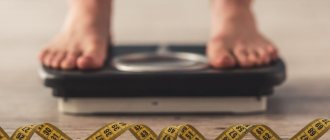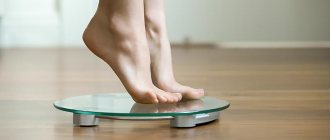We often talk about how important physical activity is when losing weight and staying in shape. Sport is an indispensable component for those who want to lose excess weight or gain a toned figure. A living example of the fact that constant exercise works wonders on the body are the ice stars. These athletes always look light and slender. So, the diet of figure skaters will help change your body for the better and gain grace.
Skaters work every day, because the results they show in competitions depend on their work. These are people with great willpower. In order to jump high and correctly perform elements on ice, you need to have a prepared body. Athletes strictly monitor their diet, not allowing themselves anything unnecessary. Of course, daily training is also a must.
Principles of dieting
A child eats differently than an adult athlete because little champions expend more energy. As a young skater goes through puberty, his body changes and he may gain extra weight. To cope with this problem and not encounter others, you have to develop a special menu that is aimed at:
- activate and normalize metabolic processes using biological additives and nutrients;
- reduce or increase body weight;
- maintain and maintain weight unchanged;
- provide enough calories, vitamins and nutrients for productive work;
- to form a hormonal background that will allow the skater to realize his potential and achieve maximum results.
Using this algorithm, any person is able to build his diet, which will help him achieve his goals.
Think about what you want to achieve, whether you want to lose weight or tighten your figure. Once you determine your goal, it will be easier to create a workout and nutrition plan.
Diet of figure skater Evgeni Plushenko: - 5 kg per week bookmark
Like most professional athletes who are forced to put up with limited physical activity, Evgeni Plushenko was faced with the problem of excess weight. After a spinal injury, he stopped participating in competitions and spent a lot of time at home. Out of boredom, he often sipped on sweet carbonated drinks and ate fast food. The consequences were not long in coming - the skater’s body became several kilograms heavier.
How the athletes' menu is built
In order to build the necessary muscle mass and not gain weight, the diet of figure skaters is structured in the ratio of proteins, fats and carbohydrates. So, to satisfy all needs, the diet contains 50-55% carbohydrates of total energy, 12-15% protein and 25-30% fat. However, it is worth noting that not every skater adheres to the figures given. The ratio depends on what goals he wants to achieve.
The consumption of vitamins is also important in the diet of skaters. Compared to ordinary people, athletes are required to include more nutrients in their menu. This is caused by avoiding skim milk and greens. Thus, “icy” women are particularly lacking in iron, calcium and zinc. These vitamins provide health to the body and bone tissue, and protect against injury.
Anyone, even a non-athletic organism, needs a constant supply of useful minerals and elements. In their absence, diseases and ailments develop, and in our case, little result is achieved in losing weight.
What to exclude first
If you want to lose weight like athletes, then try to include their restrictions. It is not recommended to use:
- various baked goods and confectionery products;
- fatty and fried foods;
- sausage products.
In general, this is a standard list of prohibited foods that is recommended for a proper diet.
What to pay attention to
- The diet of figure skaters is dominated by low-calorie foods: green salads, vegetables and fruits. Products with nutritional value are added to the menu - grains, dairy products and meat.
- Fluid consumption is a must. Skaters drink 6-8 glasses of water a day to prevent dehydration. This will help you heal your body by cleansing it of waste and toxins.
- Also consider advice on adequate nutritional intake. For figure skaters, nutrition plays a huge role, so they go through the hands of professional nutritionists so as not to gain weight. Often, adult athletes who gain weight after adolescence refuse to eat altogether, which increases the risk of anorexia and bulimia. An example is Olympic champion Yulia Lipnitskaya, who faced this problem. Therefore, do not get carried away with the practice of losing weight, exercise moderation and do not engage in fasting.
If you don’t know where to spend your extra calories, then go to the skating rink. This activity works great for muscles and burns fat.
Characteristics of the actual nutrition of figure skaters [edit | edit code ]
In the 2007/2008 season. We carried out research work to analyze the actual nutrition of young athletes on the basis of the St. Petersburg Youth Sports School of the Olympic Reserve in Figure Skating. Data on actual nutrition were collected based on the nutrition diaries completed by the athletes. To calculate the parameters of the chemical composition, we used the computer program “Organization of catering in youth sports schools and educational institutions”, developed at St. Petersburg Research Institute of Physical Culture based on tables on the chemical composition of food products and ready-made dishes.
The hygienic characteristics of nutrition were carried out in comparison with the currently existing recommended values for the consumption of basic nutrients and energy for young athletes (Order No. 155 of February 25, 2004 “On the standards for providing a minimum daily diet for students of Olympic reserve schools”). In table 30, 31 and 32 show the correspondence of the actual content of nutrients and energy to the recommended values.
Table 30 Correspondence of the content of nutrients and energy value of the daily diet of young skaters to the recommended values (%)
Study groups of athletes
Pair skating (m)
Pair skating (w)
Single skating (m)
Single skating (w)
As follows from the table, for young skaters, the need for energy is satisfied with food by 50.3-63%, in protein - by 42.3-62.3%, in fats - by 63-85.2%, in carbohydrates - by 44-49.1%.
A lack of basic nutrients (proteins, fats, carbohydrates) and energy in the diet inevitably leads to a deficiency of such essential food components as vitamins, polyunsaturated fatty acids and minerals (see Tables 31 and 32), which in our study was confirmed by data biochemical research.
Table 31 Provision of vitamins in the daily diet of young figure skaters in comparison with the recommendations of St. Petersburg Research Institute of Physics (%)
Study groups of athletes
Pair skating (m)
Pair skating (w)
Single skating (m)
Single skating (w)
Table 32 Provision of minerals in the daily diet of young skaters in comparison with the recommendations of St. Petersburg Research Institute of Physics (%)
Study groups of athletes
Pair skating (m)
Pair skating (w)
Single skating (m)
Single skating (w)
When comparing the vitamin composition of the diet with the recommended intake values, an insufficient content of all the studied vitamins, including PUFAs, was revealed in the figure skaters’ diet.
A study of the mineral composition of food revealed a deficiency in nutrition of all the studied mineral substances.
Based on the totality of the studies conducted, typical errors found in the diet of figure skaters were identified:
- reduction in the energy value of the daily diet;
- insufficient content of total carbohydrates with a violation of the structure of their consumption (excess mono- and disaccharides);
- insufficient content of proteins of both plant and animal origin in the diet;
- insufficient consumption of animal and plant fats;
- insufficient dietary fiber content.
and as a consequence:
- insufficient intake of vitamins (vitamin A, B1, B2, C, etc.);
- deficiency of macro- and microelements (calcium, phosphorus, magnesium, iron, iodine, selenium, etc.).
Based on the totality of the studied indicators, we concluded that insufficient nutritional status is determined in all skaters, regardless of the chosen type of figure skating.
Algorithm for compiling diets for figure skaters [edit | edit code ]
The main goal of creating diets for athletes is to achieve maximum compliance between the possible influence of the diet on the body of a young athlete and the tasks set by the coach for a given period of the training process.
- Calculation of average daily energy consumption in order to determine the energy value of the diet.
- Determination of the ratio of basic nutrients in accordance with a specific pedagogical task for a specific period of training of an athlete. To do this, it is necessary to know the structure of training microcycles (MCs) in the annual cycle of training athletes, pedagogical tasks for individual microcycles, and duration. Each day of the microcycle must correspond to a specific diet.
- Compiling a set of products that provides the calculated calorie content of the diet and the ratio of nutrients in it. To fulfill this condition, it is recommended to be guided by the approximate sets of products developed by St. Petersburg Research Institute of Physical Culture (Order No. 155 of February 25, 2004 “On the standards for providing a minimum daily diet for students of Olympic reserve schools”), or Appendix 9.
- Creation of a technological card index of ready-made dishes (layout cards).
- Compiling a diet from a card index of layout cards with its distribution throughout the day (4-5 meals are recommended) depending on the time and number of training sessions.
Proper weight loss for figure skaters
Of course, the diet of athletes is individual, but there are tips given by experienced specialists:
- Eat small meals. Eating by the hour is beneficial for both champions and ordinary people. By accustoming your body to order, you will not feel hungry, which means you will not consume extra calories and will lose weight.
- Reduce portion sizes. It is recommended to eat small meals so as not to stretch the stomach and not feel heavy during training. This advice is perfect for modern girls, because overeating is a common problem.
- Have snacks. Eating healthy snacks between meals will help you recharge your batteries and keep you from feeling hungry. Choose fruit or yogurt.
- Drink water. Due to heavy loads, figure skaters can become dehydrated. But water is good for everyone, so drink as much as possible.
- Look for healthy foods. We have already given an example of those products that should be abandoned. Thus, you will not only gain lightness in your body, but also improve your health.
- Don't eat after 6. Many athletes do not want to eat in the evening, so their last meal ends at 6-7 o'clock. This advice is not new at all, but it is effective.
These recommendations can become the basis of your proper nutrition. By following them, you will tune in to a diet and wean yourself from bad eating habits.
After analyzing the information about how figure skaters lose weight, you will see that some nutritional recommendations do not differ from the classic ones. But their regular observance leads to pleasant results in the form of decreasing numbers on the scales.
How ice stars lose weight. Diet menu for figure skaters and figure skaters
We often talk about how important physical activity is when losing weight and staying in shape.
Sport is an indispensable component for those who want to lose excess weight or gain a toned figure. A living example of the fact that constant exercise works wonders on the body are the ice stars. These athletes always look light and slender. So, the diet of figure skaters will help change your body for the better and gain grace. Skaters work every day, because the results they show in competitions depend on their work. These are people with great willpower. In order to jump high and correctly perform elements on ice, you need to have a prepared body. Athletes strictly monitor their diet, not allowing themselves anything unnecessary. Of course, daily training is also a must.
Extreme weight loss
This method is used by those who need to lose a couple of kilograms in a short time. The technique lasts 7 days and has a monotonous menu.
Approximate diet:
| Breakfast | Make a mixture of fruits, such as apple and banana. For taste and benefit, you can add a pinch of cinnamon. |
| Dinner | Eat boiled rice with a piece of steamed lean meat. Or drink empty chicken broth. |
| Dinner | Keep your evening meal light and eat 1 orange. |
Also drink plenty of fluids, up to 2 liters. per day. Don't allow yourself to snack. During the diet you will lose up to 3 kg.
Be careful and calculate your strength correctly, because this is a strict and emergency diet that is not suitable for every person.
Three tips from Tatyana Navka
- Eat right . Vegetables, salads, fish and yogurt are a must on the menu. But don’t exclude gastronomic pleasures from your diet; If you're overdoing it, work out more in the gym.
- Stop smoking. There is nothing worse - neither for health nor for beauty. At the same time, follow your daily routine and provide your body with proper rest. Tatyana follows this rule strictly.
- Don't skip workouts. The more active your lifestyle, the better it reflects on your appearance and health.
Methodology of contrast (fasting) days
Skaters are not allowed to gain weight, so the unloading program is very common among them. This technique helps to cleanse the body of harmful substances and adjust the functioning of metabolic processes before competitions.
Contrast days are best spent on weekends; it is also recommended to avoid heavy physical activity at this time, performing only a light set of exercises. You need to eat about 5-6 times a day. To avoid temptations, do not dine at a common table; it is better to eat alone. If you experience sudden dizziness, a strong feeling of hunger and loss of energy, then drink sweet tea, for example, with honey. If symptoms are severe, stop unloading.
If you don’t know which product to spend a contrasting day on, then focus on your own preferences. So, for cereal lovers, buckwheat porridge is suitable, which is ideal for a mono-diet because it has low calorie content. This allows you to eat it in large quantities.
“Dairy” fasting is popular - a day on cottage cheese or kefir. This is an effective weight loss that will not harm the body. Fruit and vegetable diets are also common. You can have a cucumber or apple fasting day. They do not cause much discomfort because the products quickly fill you up.
During the day of unloading, up to one kilogram of excess weight can be lost, your health will improve and your digestion will work with renewed vigor.
General principles of nutrition for weight loss for figure skaters [ edit | edit code]
In our opinion, one of the reasons for the typical mistakes encountered in the diet of figure skaters is the restriction of food consumption due to the fear of gaining excess weight. This is especially true for girls and young women. We have already written that any lack of energy, proteins, fats and carbohydrates in the diet inevitably leads to a deficiency of such essential food components as amino acids, PUFAs, vitamins and minerals, which ultimately leads to decreased immunity, injuries, and increased morbidity and decreased athletic performance. Therefore, when a young figure skater or figure skater is faced with the task of reducing body weight or maintaining the recommended one, we must correctly formulate a diet so that, with a reduced caloric content, the food contains an adequate amount of all essential food components, and the athlete can maintain the achieved level of physical fitness throughout this period.
Nutrition principles for weight loss
:
- Gradually reduce the energy value of the diet, but not below the energy consumption for basal metabolism (1200 kcal).
- Increase the protein quota in the diet to 18-20% of the daily calorie intake (but not more than 3 g/kg body weight).
- As a complete source of protein, use: beef and chicken without visible fat, low-fat fish (cod, pike, navaga, pike perch), rabbit, veal, low-fat cottage cheese, eggs. Combine meat with raw vegetables and leafy greens.
- Limit the fat quota to 26-30% of the daily calorie intake from animal fat.
- Eliminate animal fat from the diet or limit it as much as possible (butter, cream, sour cream, offal, lard, sausages).
- Increase the consumption of vegetable fats (up to 20-25 g per day). They are recommended for use in salad dressings and vinaigrettes, but not for frying foods.
- Maintain a carbohydrate quota of up to 50-56% of the daily calorie intake while limiting carbohydrates with a high glycemic index (sugar, sweets, confectionery, premium flour products, potatoes, white rice, corn flakes).
- Increase the consumption of fruits and berries containing carbohydrates with a low glycemic index: apples, grapefruits, oranges, peaches, plums, lemons, currants, gooseberries, cranberries, and juices from them.
- Maintain the frequency of meals - at least 4-5 times a day.
- The main food consumption should be in the morning and afternoon (at breakfast and lunch - 2/3 of the total daily calorie intake, at dinner - 1/3, respectively).
- It is recommended that the evening meal consist mainly of protein products (lactic acid, lean meats, eggs, seafood).
- The time between dinner and the start of bed should be at least 3 hours.
- Limit foods that stimulate appetite (overeating) in your diet: strong broths, pickles, marinades, smoked foods, fried foods, spicy seasonings, alcohol.
- To prevent overeating, you need to eat slowly, chewing your food thoroughly.
- The use of diets with limited energy intake (hypocaloric nutrition).
For an approximate weekly hypocaloric diet aimed at reducing the body weight of figure skaters, see Appendix 15. This diet is prescribed for no more than 1 month.
As an alternative to diets with limited energy intake, fasting days can be used. Most of them are inferior in energy value and chemical composition, so they are prescribed for 1-2 days and no more than 1-2 times a week.
Methodology for conducting contrast, or fasting, days [edit | edit code]
Contrast, or fasting, days are carried out with the aim of restructuring metabolism and stimulating the mobilization and use of energy resources from fat depots, which leads to weight loss. Increased diuresis and improved bowel movements these days lead to a more or less significant decrease in body weight and contribute to the removal of metabolic end products from the body.
A fasting diet is usually prescribed on a day off. Meals are taken 5-6 times a day. To avoid irritation of the food center, you should not eat at a common table. On this day, it is advisable to ensure physical rest - excessive physical stress is unacceptable. Light to moderate housework is permitted. It is advisable to plan your daily routine in advance, including spending time in the fresh air.
If you feel hungry, accompanied by severe weakness and dizziness, it is recommended to drink tea with sugar, jam or honey.
When choosing a menu for a contrasting day, you should be guided by your personal tolerance to the proposed diet foods and individual taste. At the initial stage, preference should be given to diets with the highest energy value (higher calorie content) - meat, fish, cottage cheese. In the future, other types of diets (fruit and vegetable, dairy) or double fasting days can be used: for example, first a meat day is prescribed, and then an apple day (Appendix 16).
One of the methods that helps to correct and maintain the recommended body weight is changing eating behavior, i.e. developing the habit of eating right.
Losing weight before training
The diet of skaters changes before summer or winter competitions. For example, a four-course menu for every day looks like this:
| Breakfast | Tea with sugar and lemon, rolled oatmeal or omelette, yogurt, fruit. This start of the day has an approximate calorie content of 800 kcal. |
| Dinner | Chicken broth, buckwheat with lean meat, sliced vegetables, fruit. During the day, skaters will eat up to 1200 kcal at such a table. |
| Afternoon snack | Juice, low-fat cottage cheese and fruit. The total snack will be 500 kcal. |
| Dinner | Tea, rice with steamed fish, kefir with fruit. An evening meal will cost 800 kcal. |
As you may have noticed, this is a high-calorie menu, and some athletes consume up to 3000 kcal. per day. However, this is a general example of the diet, and in reality the menu may look more meager.
Hypocaloric nutrition
This menu is completely opposite to what we described above. The essence of the diet is to reduce calories to lose weight.
So, women consume no more than 1200 kcal per day. It is worth limiting the amount of sugar and focusing on taking vitamins. A balanced menu must be developed in fractional form. The diet of figure skaters should not exceed 3 weeks of weight loss. Don’t forget about physical activity, because athletes spend energy on it every day.
Example of a weekly menu
| Day 1 | Breakfast | Eat an omelet of 2 eggs and drink a glass of low-fat kefir. |
| Dinner | Prepare pearl barley soup and buckwheat with beef, vegetable cabbage salad. | |
| Dinner | Make liver pancakes and brew green tea. | |
| Day 2 | Breakfast | Start your early meal with a vegetable salad made from cucumbers, washed down with a herbal drink. |
| Dinner | Cook lean rice soup, steam beef meatballs, drink apricot juice. | |
| Dinner | Prepare a vegetable side dish with stewed cutlets and add a cup of tea. | |
| Day 3 | Breakfast | Eat 1 apple and 100 g of boiled chicken. |
| Dinner | Enjoy lean borscht and beef spaghetti. | |
| Dinner | Prepare the cabbage rolls. | |
| Day 4 | Breakfast | Have breakfast with dumplings, no more than 200 g, and drink a cup of tea. |
| Dinner | We recommend Lenten pickle along with steamed vegetables. | |
| Dinner | A good choice would be pumpkin porridge with apple. | |
| Day 5 | Breakfast | Boil 1 potato and serve it with fresh cucumber. |
| Dinner | Have lunch with vegetable soup with a side dish of barley and fish. | |
| Dinner | Steam meatballs with vegetables. | |
| Day 6 | Breakfast | Cut a salad of apples and carrots and drink tea. |
| Dinner | Eat borscht with stuffed zucchini. | |
| Dinner | We recommend vegetables with fish. | |
| Day 7 | Carry out a fasting diet by choosing one product. | |
You can lose up to 3 kg on this diet. Remember that portions should not be large - about 200 g.
Menu and nutrition of the famous figure skater
Following this diet is simple and difficult at the same time. There are 3 meals per day. A food set is available: eggs, lean fish and meat, cereals, fruits and vegetables. The calorie content of the diet is low - about 900 kcal. Therefore, an obsessive feeling of hunger may occur. Constant employment helps to get rid of it. It is not advisable to rest on the couch for a long time.
One day menu:
- In the morning: fruit. You can make fresh pineapple with banana, strawberry-currant smoothie with pieces of kiwi and orange, or eat a cup of any berries. Green tea, infusion of aromatic herbs or compote without sugar are also allowed.
- For lunch: a dish of meat or fish with boiled rice. Turkey steak, steamed cutlets, cod or pike perch fillets are suitable. Instead of rice, lean chicken broth without salt or green vegetable salad are allowed.
- In the evening: a small fruit. Half a grapefruit, an orange or a couple of tangerines.
During the diet, the following are prohibited: flour, fast food, sweets, strong tea and coffee, alcoholic drinks, juices in packages. You need to drink 2.5 liters of still water per day.
You need to follow this diet for 1 week. A longer period leads to physical exhaustion and poor health. You can repeat the diet every 2 months. To prevent weight gain, it can be used as a fasting regimen for 1 day.
Feedback from skaters about diet
We have already said that each athlete’s program is individual. So, while they are under the age of 12, they can consume whatever they want, because the body quickly uses up energy.
For example, in an interview about the diet of Evgenia Medvedeva, the world champion, it was said that she does not follow her diet. He usually eats 3 times a day and even allows himself a slice of chocolate.
The coach of Adelina Sotnikova, Olympic champion in Sochi, said that her ward does not eat a single gram of sweets, flour or bread. He tries to eat only a vegetable diet and lean meat. The skater also practiced a fasting day on the water to keep in shape.
And Evgeni Plushenko, during his sports career, adhered to an extreme weekly diet in order to quickly get in shape.
Skaters are people who put every effort into their development. They strictly monitor their diet and do not allow themselves to be lazy, training every day. By following their example and following a special diet, you can lose weight and improve your body health.
Evgenia Medvedeva
Recently, on her Instagram, Evgenia Medvedeva posted a story in which she eats flowers with sushi chopsticks. "Diet. Four weeks,” the girl signed. Does the two-time world champion really eat only vegetation? Of course, not only flowers, but after Evgenia moved to Canada, she became interested in veganism and began working with a nutritionist.
View this post on Instagram
Her daily diet includes three meals, and dinner must be light and no later than six in the evening. The champion’s diet before performances excludes fatty, fried and spicy foods, so before the Olympics in Pyeongchang, Evgenia made do with unleavened rice.
However, there are not very many strict prohibitions in a figure skater’s diet. She herself admits that she cannot live without sweets, so before training she allows herself a couple of pieces of chocolate or marmalade. Medvedeva is also a fan of Asia, so she doesn’t deny herself to tom yum soup, sushi or Japanese chips.
Why are ballerinas so skinny and what do they actually eat?











